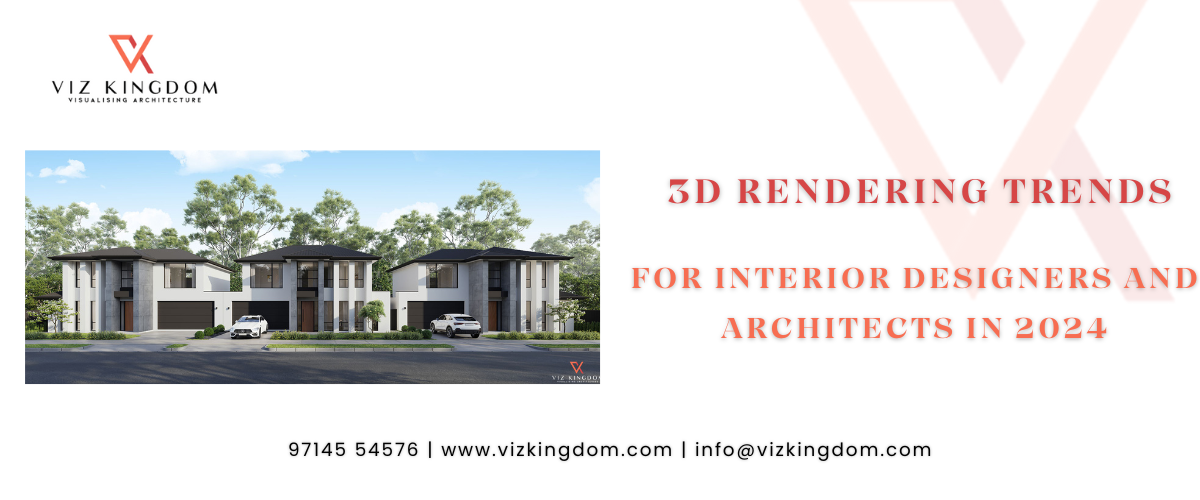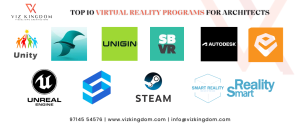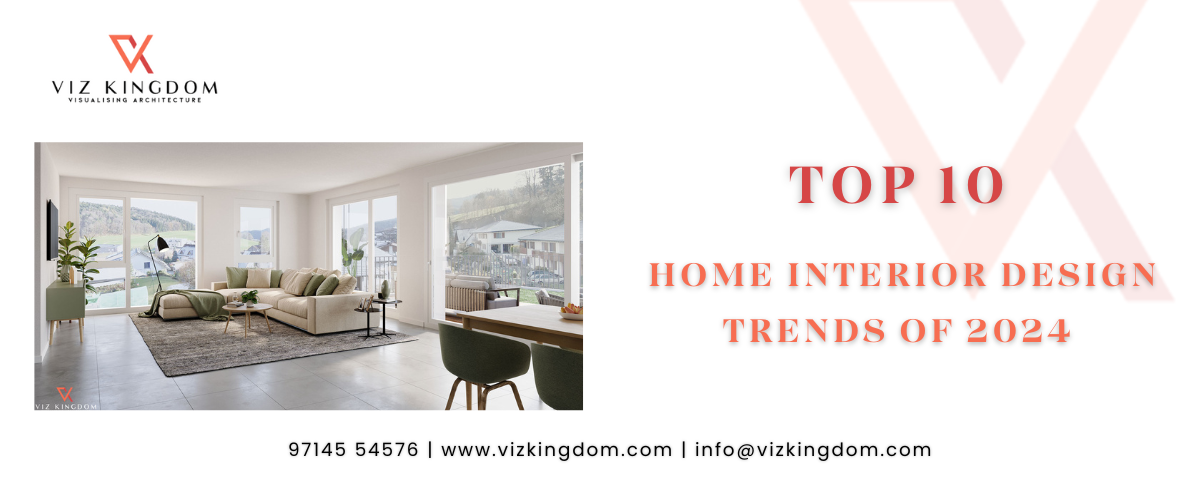
3D Rendering Trends For Interior Designers And Architects in 2024
Over the past ten years, not only has the market for 3D renderings changed significantly, but so have 3D materials, photorealism, and technology. The design industry is changing due to the rapid advancement of 3D digital technology in 3d rendering interior design, which provides a realistic visual experience for those wishing to use it as a tool in their marketing campaigns. Since the industry is always expanding and changing, we want to take a look at some of the trends that will affect 3D rendering in 2024 in this post.
Real-Time Rendering
Real-time rendering solves the problem of traditional design methods’ long processing times and poor efficiency. In real time, architects and interior designers captivate their clients with captivating presentations of their projects. When we first established our business, this technology was not even thought to be produced.
These models actively engage with the designs in an attempt to capture the audience’s attention through interactive visuals. It facilitates the client’s clearer understanding of the design concept. Moreover, real-time rendering fosters creativity in addition to offering quick visual feedback. Architects can quickly see the results of experimenting with various design alternatives.
AI-Powered Rendering
Artificial intelligence is going to have a big influence on 3D rendering in the future. Rendering engines are capable of producing aesthetically beautiful and lifelike visuals by evaluating and learning from data driven by artificial intelligence. Better than previous visuals in the field of architecture will be created with this technique. Furthermore, AI might have produced the project’s entire film.
We can also create realistic graphics by feeding AI with details like style, room proportions, and budget. With this, interior designers may quickly generate a number of design concepts and choose which would best suit their clients’ needs and preferences.
Cloud-Based Rendering
Strong hardware is not used in cloud-based rendering; instead, cloud servers are used. Cost-effectiveness is by far its greatest advantage. Additionally, it provides accessibility, which means that if you use cloud-based rendering, you won’t need to spend money on expensive maintenance, software licences, or equipment.
Although our organisation has long used cloud-based solutions, the opportunities are now even greater because we will require strong online solutions for artificial intelligence and real-time rendering technology.
With this readily available via the network, working with your team members will be simple and efficient. Similar to this, cloud computing is making 3D rendering services more and more dependable and adaptable.
AI-Assisted Generative Designs
Various designs, options, and substitutes for designs can be produced in accordance with certain specifications. AI can be used by architects to create many designs that satisfy conventional requirements, like energy conservation, efficient use of energy, and aesthetic appeal. This approach promotes creativity and helps architects investigate novel and fashionable design concepts. AI assisted generative designs are extremely helpful for almost every 3d rendering architecture company as it gives a whole new experience to its clients with AI.
Mobile Rendering Apps
With mobile applications, you may use your smartphone to generate and view 3D renderings. The main benefit of this rendering tool is its accessibility, which enables designers to readily make modifications in real time in response to customer requests.
As mobile devices become more capable, it is anticipated that the adoption of mobile rendering applications will increase significantly in the near future. With these applications, you may create and use 3D content while on the go. It will open up new doors for the e-commerce and social media industries.
Collaborative Rendering
It is anticipated that the 3D rendering sector will be increasingly focused on implementing technologies in 2024 that facilitate collaboration even more. As a result, stakeholders can collaborate and communicate by having multiple designers working on similar designs across multiple screens. You can record the design history and make direct comments on the image with this real-time cooperation, which can shorten the design process’s delays.
This will help to prevent errors and greatly simplify the process for all parties involved, including builders, clients, investors, and designers, architects, and constructors. Everyone will be able to observe where their project stands, allowing them to adjust their plans of action accordingly.
Holographic rendering
The holographic solutions world was more prevalent in science fiction.
The lines dividing the real and virtual worlds will become less distinct as a result of holographic rendering. This trend will be utilised to offer engaging experiences in education, leisure, and teleconferencing. 2024 will see a trend toward more realistic experiences, and one method to create an immersive experience is with holographic rendering. Images created by the holographic representations have a true three-dimensional dimensionality. It provides designers and clients with precise dimensions so they can understand the unique relationship between various objects.
Immersive 3D Tours
With the advent of virtual tours, seeing construction sites has become an outdated notion. You can observe how precisely your structure is framed without having to go via the construction site. In order to avoid wasting time and energy, in-person visits are being replaced with virtual, three-dimensional excursions.
In a similar vein, it seems tedious and dry to analyse the specifics and state of a project through static illustrations. The drab look has also been coloured by the most recent developments in 3D rendering. These trips will provide you with a 360-degree vista and a more captivating perspective. Additionally, you can zoom in for up-close views. Zooming out will, on the other hand, make the image wider.
These tours are groundbreaking in the way that they display buildings, interior designs, and architectural projects. They provide spectators a sense of independence so they can focus on topics of interest and discover more about the design.




